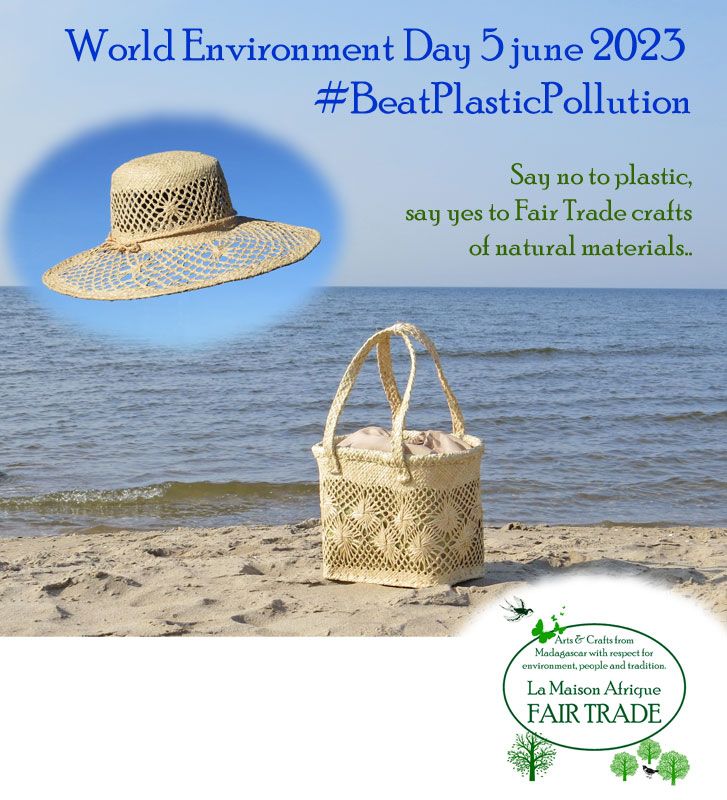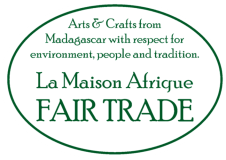World Environment Day 5 June 2023
#BeatPlasticPollution

World Environment Day 5 June 2023
The United Nations Environmental Programme (UNEP) theme for World Environment Day on 5 June 2023 focus on solutions to plastic pollution under the campaign #BeatPlasticPollution.
Rampant pollution, biodiversity breakdown, and climate instability are the most pressing planetary crises of our time. The rapid growth of plastic production poses serious threats to Earth's natural systems, on which life depends, and it's projected to get worse. The plastic pollution is in stark contradiction with the agenda 2030 and the Sustainable Development Goals (SDG) the world have agreed upon.
UN talks on international action to reduce plastic waste: 2 March 2022, Heads of State, Ministers of environment and other representatives from UN Member States endorsed a historic resolution at the UN Environment Assembly to End Plastic Pollution and forge an international legally binding agreement by 2024.
Continuing with business-as-usual is simply not an option.
Say no to plastic, say yes to Fair Trade crafts of natural materials. *)
---
Plastic create problems during its whole lifecycle:
Plastic raw material:
A major problem with plastic is that over 99% of it is made from chemicals sourced from fossil fuels. Hence, not renewable. Fossil fuel and plastic industries are deeply connected.
Plastic pollute during manufacturing:
When plastic is produced, it’s made from toxic materials such as benzene and vinyl hydrochloride. These chemicals are known to cause cancer, and the manufacturing byproducts contaminate our air and soil. The type of plastic that is the major source of dioxin is PVC.
Phthalates are another toxic chemical added to plastics to make them softer and more pliable. It is known to affect our fertility, disrupt our endocrine glands, birth defects and other health problems. The problem with phthalate is that they are not chemically bound to the products, so they’re easily evaporated into the air.
Plastic pollutes during the time it is in use:
E.g. plastic as synthetic fibres such as polyester, nylon, acrylic generate micro plastics when being washed. Plastic polymers are a key ingredient in many forms of paint and flakes can leak into the environmental while being applied to objects, or through normal wear and tear and removal. According to Swish researchers, 1.9 million tonnes of paint end up in the oceans and waterways every year.
Plastic pollutes when being discarded:
Statistics shows that only some 9% of world plastic waste is being recycled. Of the rest, some 19% is being incinerated. Burning plastic releases black carbon (soot), which contributes to climate change and air pollution. Most plastic waste is being dumped on land or in the sea. Unfortunately, plastic is not bio-degradable. Instead, it breaks down to micro plastics (fragments less than 5mm long) and even smaller nanoplastics. Microplastics and nanoplastics can have significant adverse impacts on marine life, biodiversity and ecosystem functioning. They are known to soak up pollutants that flow off land into the sea, including pharmaceutical and industrial waste. The toxicity can transfer through the food chain as marine species eat and are eaten.
---
Plastic & Climate Change:
Plastic products create greenhouse gas emissions across their whole lifecycle. If no action is taken, greenhouse gas emissions from the production, recycling and incineration of plastics could account for 19 per cent of the Paris Agreement's total allowable emissions in 2040 to limit warming to 1.5 degrees Celsius.
Plastic pollution impact on Ocean as carbon sink: In recent years, there has been an increased urgency to protect the ocean and seas to tackle climate change. The ocean is the planet's largest carbon sink, storing as much as 90 per cent of the additional heat that carbon emissions have trapped in our atmosphere and one-third of the additional carbon dioxide generated since the industrial revolution. Carbon is sequestered in every component of the ocean, especially mangroves, seagrass, corals and salt marshes. The more damage we do to our ocean and coastal areas, the harder it is for these ecosystems to both offset and remain resilient to climate change.
---
Plastic pollution injustice:
A) Injustice between humans and all other living beings on the planet:
"Only we humans make waste that nature can't digest." Those are the words of oceanographer Capt. Charles Moore, who discovered the Great Pacific Garbage Patch in 1997. And, of course, he's talking about plastic. Plastic impacts on marine life range from physical or chemical harm to individual animals, to wider effects on biodiversity and ecosystem functioning, i.e. the plastic injustice hits birds, fishes and all between.
B) Injustice between economically rich and poor countries:
The impacts of plastic pollution aren’t felt equally around the world. Wealthier countries produce more plastic waste, which all too frequently flows into less developed countries where waste management is the least sophisticated. Also, communities in developing countries are the least capable of managing the environmental, health, social and cultural burden of plastic pollution due to a lack of government support or funds. That means women, children, waste workers, coastal communities, Indigenous Peoples and people who depend on the ocean feel the impacts more intensely, particularly when moving or burning mismanaged waste. It also means these economies suffer as they're suffocated by plastics.
C) Injustice between generations:
According to OECD data, there is already an estimated 30 Mt of plastic waste in the seas and an estimated 109 Mt accumulated in rivers. The amount of plastic waste entering the seas is rapidly growing – and the coming generations are inheriting an enormous problem to clean up.
---
*) Say no to plastic, say yes to Fair Trade crafts of natural materials.
The materials in the in La Maison Afrique FAIR TRADE range:
The products are all made from local, natural materials or (to a lesser extent) locally collected, recycled waste. Natural materials consist mainly of palm leaves, grass, sedges, sisal. The materials are wild growing without any application of pesticides or irrigation. They are materials that are traditionally used in handicraft. Sustainable usage gives the wild growing a place in Madagascar's economic development.
Manufacturing of the products in La Maison Afrique FAIR TRADE range:
A genuine, small-scale and environmentally friendly crafting. The process from the harvesting of natural materials or collection of waste materials to the finished product is highly manual. Palm leaves are harvested by regular pruning of palm trees, grass and reeds cut by hand etc. The natural fibres are prepared with hand-driven processes and sun-dried. Most of the natural fibres are used undyed. In case of dying, only dyes that are guaranteed not to contain azo-substances or heavy metals are used. Bags are sewn together by material consisting of hand-woven or plaited natural fibres. Hats are braided or crocheted of natural fibres or sewn of hand-woven raffiapalmleaves - which is an excellent material for the manufacture of quality hats. The craftsmen are skilled and careful in the use of the material. Environmental impact in terms of energy consumption and waste is minimal. Culture and nature conservation ministries in Madagascar check and approve the goods before export. All products are certified by the Ministère de l’Artisanat et des Metiers as « Produits Artisanaux fait main », i.e. handmade craft products.
Transport of the products in La Maison Afrique FAIR TRADE range:
100% of the goods is shipped by sea from Madagascar to Sweden. A minimum of packaging material (recycled cardboard boxes and bags) are used. In Sweden: The products are packed in cartons. No plastic, only paper, is used as packing material. The boxes are delivered to shops by truck.
Readymade goods in La Maison Afrique FAIR TRADE range:
Handmade products – arts and crafts as well as handicrafts – are products with an identity. These are unique products that often have a long life with the consumer. Crafts are also created by people and can therefore be changed (eg repaired) by people. Finally: As the absolute majority of goods in the La Maison Afrique FAIR TRADE range entirely consists of natural fibers and are completely biodegradable, at the end they can return to the natural cycle.
On photo: Fair Trade hat and Fair Trade basket bag handmade the artisan's local, renewable and sustainable natural materials: sun-dried, nature white raffia palmleaves and sedges.
Bottom line:
Madagascar has a unique flora and fauna, is one of the world's "biodiversity hotspots". That this environment is protected from pollution and littering is of immeasurable great value.

La Maison Afrique FAIR TRADE
-
+46 (0) 706017777
-
This email address is being protected from spambots. You need JavaScript enabled to view it. -
Trustorps Gård
311 65 Vessigebro
SVERIGE -
VAT/Orgnr: SE556526323201

